Philip Johnson and John Burgee’s AT&T Building, now known as 550 Madison Avenue, is being considered for landmark designation. However, questions remain about the future of the building’s interior spaces, particularly the ground floor lobby.
After listening to a brief presentation on the Post-Modern building’s history Tuesday morning, the New York Landmarks Preservation Commission (LPC) decided to add the building’s exteriors to its calendar—the first step in the landmark designation process.
“Maybe for the first time, the commission will lead in the conversation about a particular architectural paradigm,” said LPC chair Meenakshi Srinivasan, noting that the AT&T Building’s design was controversial when it was built, and remains so today.
“But there still are reasons for the commission to think about this,” she continued. “It’s probably the first and definitely the most iconic Post-Modern building in New York City.” The designation would protect the exteriors only.
The LPC’s initiation of the landmarking process comes almost a month after Snøhetta, the design architect for the building’s upcoming $300-million renovation, released their proposed design, which would alter the facade of the six lower levels, expand enclosed public space on the ground level, and add a multi-story penthouse just under the Chippendale crown of the 37-story building.
The proposal was widely criticized—even prompting a street protest—by architects, preservationists, and critics for removing original elements of the building, notably replacing the rose-colored granite base with a glass curtain wall.
“This is landmarking at its finest,” said Liz Waytkus, executive director of Docomomo US, who attended the morning meeting in Lower Manhattan. “Within one month this building went from endangered and threatened to calendared by Landmarks.”
The most recent application for LPC to consider designating the building a landmark was filed October 31—a day after Snøhetta’s design proposal was released—by preservationist Thomas Collins. An earlier application to designate the building and its lobby had been filed by Brooklyn artist John Jurayj in February 2016. The building became eligible for landmarking after its 30-year anniversary in 2014.
If 550 Madison becomes a landmark, the exterior will remain unchanged, with any proposed alterations requiring LPC’s approval.
But work permits have already been issued for work inside the building.
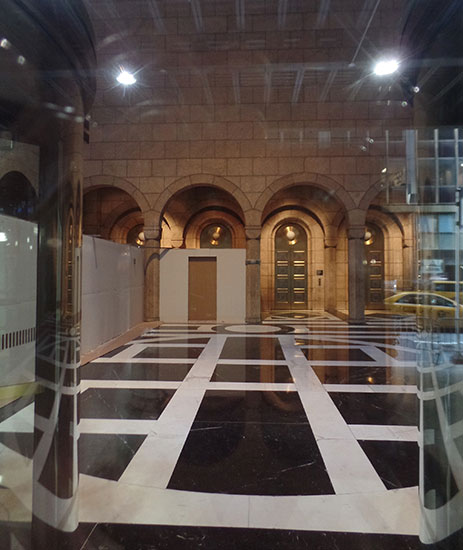
One permit, issued August 3 to Spector Group, an architecture and planning firm, describes a project on the second and third floors as “removal and installation of interior non bearing [sic] partitions and related finishes.” The project is estimated to cost about $428,000.
Another permit was issued to Gensler, a member of the team working on the building’s recently-announced renovation, on October 26 for “installation and removals of interior partitions, fixtures and finishes for elevator lobby scope” on the 23rd floor. The estimated cost of the work is listed as $1.66 million. The building owner, Olayan America, and development partner, Chelsfield, would not comment on the nature of either firms’ work.
In addition, repairs to the famous Madison Avenue facade, listed in a permit issued August 2 to engineering group Thornton Thomasetti, are ongoing, as are several other interior projects related to fire safety systems.
Olayan and Chelsfield issued a statement following the LPC’s calendaring declaring their support of landmark consideration.
“We are committed to creating a rejuvenated 550 Madison that retains its important presence, works for future tenants, and realizes long-promised public amenities to the larger Midtown community. And we look forward to further collaborating with the LPC to make that happen,” said David Laurie, Chelsfield’s managing director, in a statement.
What that means for the Snøhetta design, commissioned by Chelsfield and Olayan, is unclear. The architecture firm would not comment.
With Olayan and Chelsfield’s stated support and the LPC’s unanimous decision to calendar the building, designation appears likely, but, again, landmark status is only being considered for the exterior of the building, despite some commissioners’ comments about their wish to consider the lobby, once home to the so-called “Golden Boy” statue (formally named the “Spirit of Communication”), which is now in AT&T’s headquarters in Dallas.
“In some ways the lobby is the most spectacular part,” said Jurayj, the Brooklyn artist, who had never seen historical references in contemporary architecture until he saw Johnson’s design. “And here comes this bombastic, granite-clad [interior] like a Roman temple.”
Nathan Eddy, a documentary filmmaker who has been spearheading a public campaign to landmark the building in partnership with Docomomo, plans to present a proposal for the LPC to include the lobby, likely at the LPC’s public hearing, which is not yet scheduled. The next step in the landmark designation process is LPC’s in-house production of a complete research report on the building.
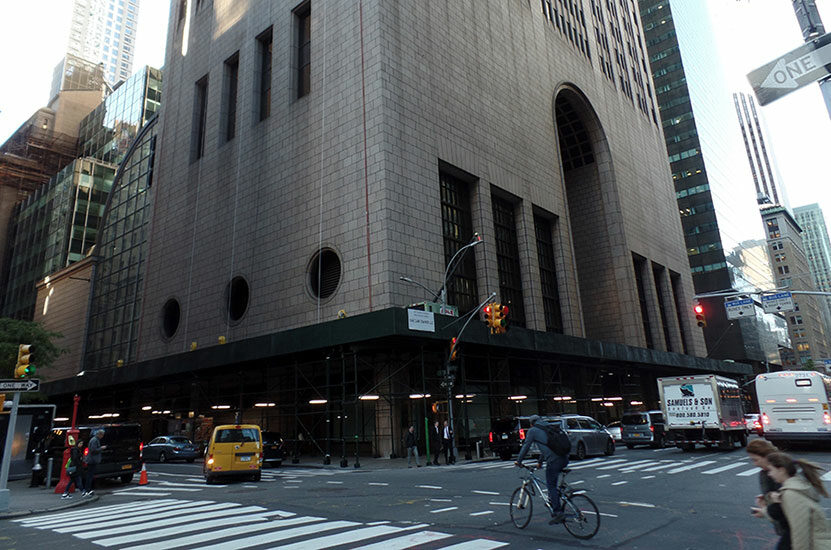
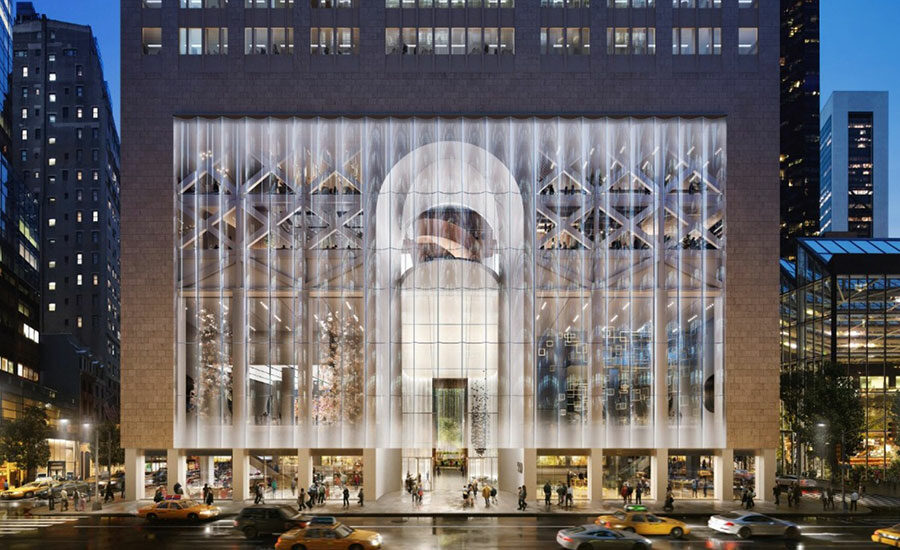
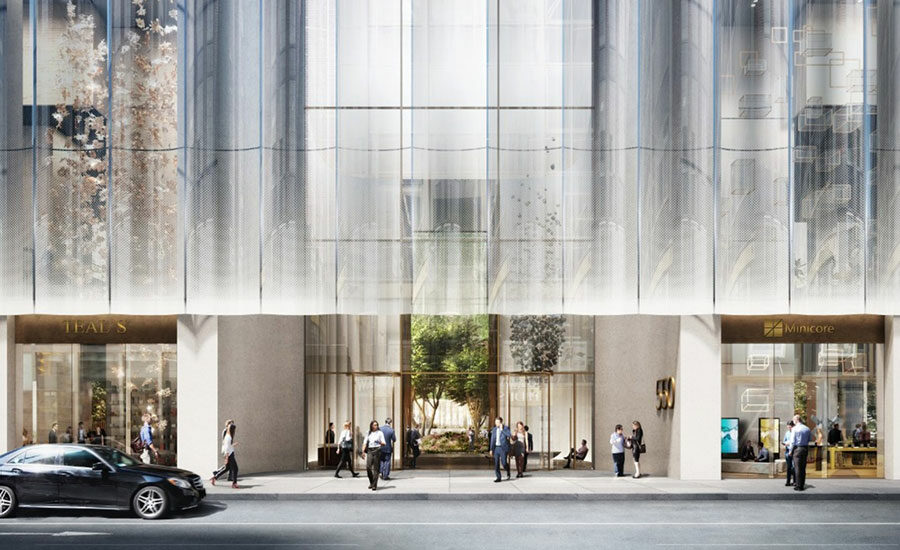
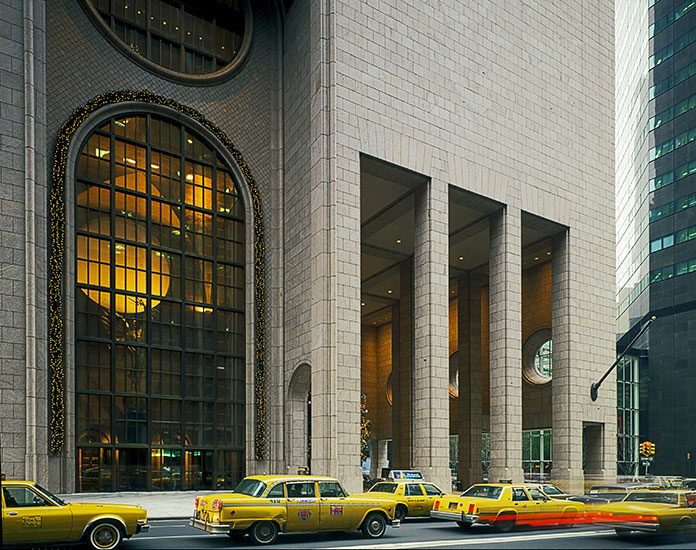
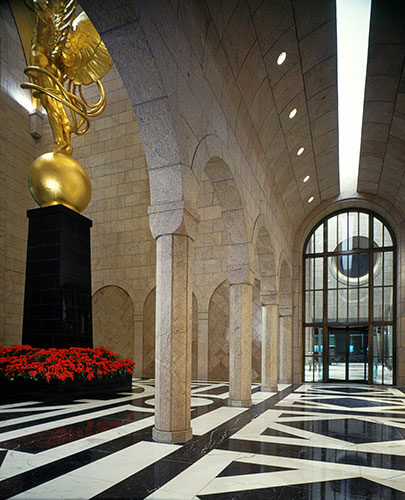
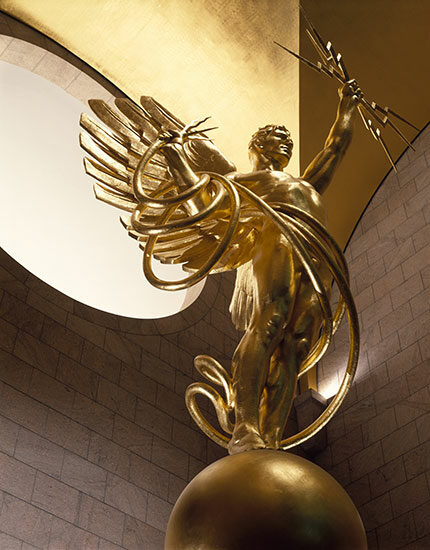

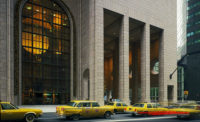
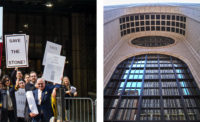
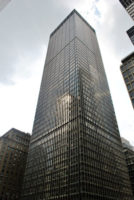
Post a comment to this article
Report Abusive Comment